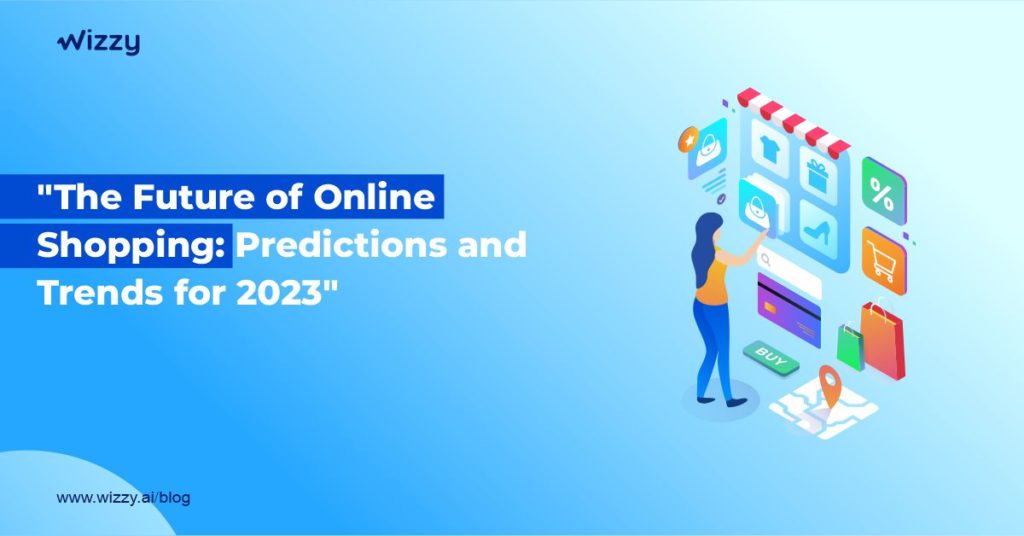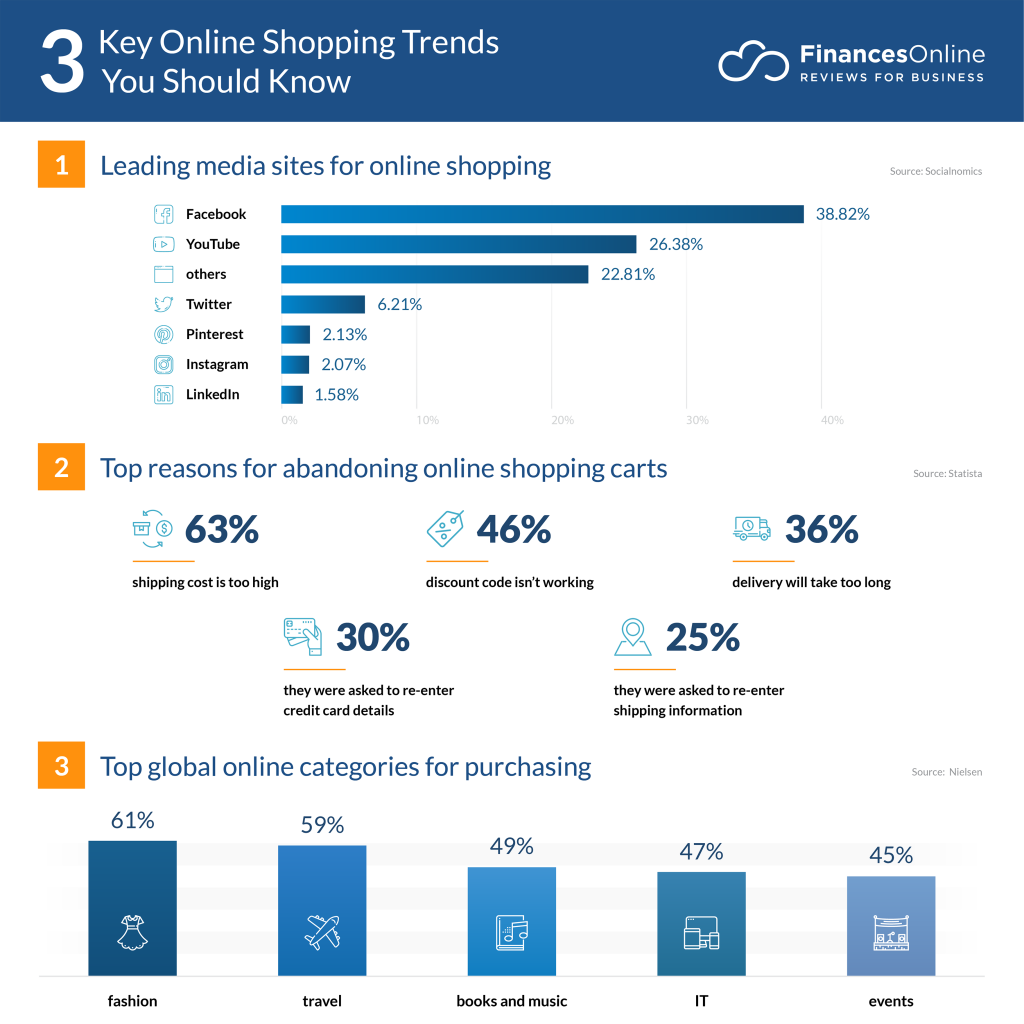Introduction to Online Shopping Trends: Navigating the Future of E-Commerce
The e-commerce industry has been rapidly evolving, influenced by shifting consumer preferences, new technologies, and global events. With the rise of online shopping, businesses must keep up with emerging trends to stay competitive. Understanding these trends not only helps retailers enhance the shopping experience but also ensures they can meet customer demands in an increasingly digital world.

The Rise of E-Commerce: A Snapshot of the Current Market
E-commerce has fundamentally changed the way consumers shop. Over the past decade, we’ve seen a massive shift from brick-and-mortar stores to digital shopping experiences. According to a recent report, global online retail sales are expected to surpass $7 trillion by 2025, a testament to the massive growth of online shopping.
Online shopping has become a key part of consumers’ lives, driven by convenience, a wider selection of products, and the ability to compare prices instantly. The COVID-19 pandemic further accelerated this transition, as physical stores closed their doors and consumers turned to online platforms for everything from groceries to luxury goods.
This article explores the latest online shopping trends that are shaping the future of e-commerce, offering businesses actionable insights to stay ahead in the competitive digital marketplace.
1. Mobile Commerce (M-Commerce): Shopping on the Go
With the widespread use of smartphones, mobile commerce (m-commerce) has surged in popularity. Consumers now prefer shopping from their mobile devices, with mobile sales accounting for nearly 73% of total e-commerce sales globally. This shift means businesses must prioritize mobile-friendly websites and apps that deliver a seamless, user-friendly shopping experience.
Key considerations for businesses to enhance m-commerce include:
- Responsive design: Websites and apps must adapt to different screen sizes and ensure easy navigation on mobile devices.
- Frictionless checkout: Integrating one-click purchasing and mobile payment options like Apple Pay and Google Pay can reduce cart abandonment rates.
- Personalized experiences: Mobile shoppers expect tailored recommendations and promotions based on their browsing and purchasing history.

2. Social Commerce: Shopping via Social Media Platforms
Social media is no longer just a tool for engagement—it’s now a key driver of online shopping. Social commerce involves leveraging platforms like Instagram, Facebook, TikTok, and Pinterest to sell directly to consumers. This trend has been accelerated by the integration of shoppable posts and social media stores that allow users to buy products without leaving the app.
Social commerce offers several advantages:
- Increased visibility: Brands can reach a vast audience through influencers and user-generated content.
- Seamless shopping experience: Shoppers can explore products, view reviews, and make purchases without ever leaving their social media feed.
- Targeted advertising: Advanced algorithms on platforms like Facebook and Instagram allow businesses to target specific demographics, ensuring the right products reach the right audience.
Tip for businesses: Make sure your product images and descriptions are optimized for social media. High-quality visuals and compelling product descriptions can significantly boost conversions on social platforms.
3. Personalization: Creating a Tailored Shopping Experience
Consumers today expect a highly personalized shopping experience. Retailers are leveraging data analytics and AI-powered tools to provide tailored recommendations based on a shopper’s browsing history, preferences, and past purchases. Personalization in e-commerce is no longer a luxury—it’s a necessity.
Examples of personalization include:
- Product recommendations: Customizing the shopping experience with suggestions like “Customers who bought this also bought” or “Recommended for you.”
- Dynamic pricing: Adjusting prices based on factors like customer behavior, location, or browsing history.
- Personalized marketing: Sending targeted email campaigns and ads that resonate with specific segments of your customer base.
Personalization not only improves the customer experience but also drives higher conversion rates, as shoppers are more likely to buy products that are tailored to their preferences.
4. Voice Commerce: Shopping via Voice Assistants
With the rise of voice-activated assistants like Amazon Alexa, Google Assistant, and Apple Siri, voice commerce is poised to revolutionize online shopping. According to some estimates, voice shopping could account for over $40 billion in sales by 2024.
Key aspects of voice commerce include:
- Voice search optimization: Businesses must optimize their websites for voice search, as queries tend to be more conversational and longer than text-based searches.
- Easy ordering: Consumers can place orders with simple voice commands like, “Alexa, order my favorite coffee.” This hands-free convenience makes it easier for customers to shop.
- Integration with smart devices: As smart home devices become more ubiquitous, the ability to make purchases through these devices will grow significantly.
Voice commerce presents a unique opportunity for businesses to tap into the growing number of voice assistant users. However, the key challenge will be ensuring your website is optimized for voice search to capture voice-driven sales.
5. Sustainability: Eco-Conscious Consumer Behavior
As environmental concerns continue to rise, sustainability is becoming a crucial factor in purchasing decisions. Eco-conscious consumers are more likely to support brands that align with their values, including those that prioritize sustainable sourcing, ethical labor practices, and carbon-neutral shipping.
Retailers can cater to this demand by:
- Offering eco-friendly products: Consumers are increasingly seeking products made from sustainable materials or those that contribute to a circular economy.
- Transparent supply chains: Brands that are open about their sourcing and production processes gain trust among environmentally conscious consumers.
- Sustainable packaging: Moving towards biodegradable or recyclable packaging helps reduce waste and supports eco-friendly initiatives.
Incorporating sustainability into your brand’s ethos not only aligns with consumer expectations but also offers long-term benefits, such as stronger customer loyalty and brand reputation.
6. Augmented Reality (AR) in Online Shopping
Augmented reality (AR) is transforming the online shopping experience by allowing customers to visualize products in real-world settings before making a purchase. From trying on virtual clothes to visualizing furniture in their homes, AR provides a more immersive and interactive shopping experience.
Businesses can use AR in various ways:
- Virtual try-ons: Shoppers can use AR to try on clothes, makeup, or accessories without leaving their homes, increasing purchase confidence.
- Interactive product displays: Consumers can visualize how furniture or home decor will look in their own spaces using AR-enabled mobile apps or websites.
- Enhanced product descriptions: AR can help illustrate product features, providing a more detailed and engaging shopping experience.
With AR technology continuing to advance, it is poised to become a mainstream tool for online retailers to enhance customer experience and drive sales.

7. Subscription-Based Models: Predictable Revenue Streams
Subscription-based models have grown in popularity, offering businesses a predictable revenue stream and customers a more convenient way to shop. Retailers are moving beyond product subscriptions and are now offering service-based subscriptions, such as:
- Monthly deliveries: Subscription boxes for everything from beauty products to snacks are growing in popularity.
- Auto-replenishment: Many businesses now offer auto-replenishment services for products like household essentials, pet supplies, or vitamins.
- Premium memberships: Brands like Amazon Prime and Walmart+ offer exclusive benefits like free shipping, early access to sales, and member-only discounts.
Subscription models help businesses create a loyal customer base while offering a recurring revenue stream. Customers, on the other hand, enjoy the convenience of regular deliveries and exclusive perks.
Conclusion: Preparing for the Future of Online Shopping
The future of online shopping is bright, with technological advancements and evolving consumer expectations driving the industry forward. From mobile commerce and social shopping to voice assistants and sustainability, businesses must stay agile and adopt the latest trends to stay ahead of the competition.
To succeed in this fast-paced environment, businesses should focus on:
- Optimizing for mobile and voice search.
- Leveraging AI and data to personalize the shopping experience.
- Embracing sustainability and ethical practices.
- Integrating AR and social commerce to engage customers in new ways.
By staying ahead of these trends, retailers can increase customer satisfaction, boost sales, and ultimately, thrive in the evolving e-commerce landscape.
FAQs
1. What is social commerce, and how does it impact online shopping?
Social commerce refers to selling products directly through social media platforms like Instagram and Facebook, making shopping seamless within these apps. It increases brand visibility and simplifies the purchasing process for users.
2. How can businesses benefit from personalization in e-commerce?
Personalization allows businesses to offer tailored product recommendations and marketing campaigns, improving conversion rates and customer satisfaction.
3. What role does AR play in the online shopping experience?
Augmented Reality (AR) allows consumers to interact with products virtually, such as trying on clothes or visualizing how furniture will fit in their home, enhancing purchase confidence.
4. How do sustainability practices affect consumer behavior?
Consumers are increasingly opting for brands that
prioritize eco-friendly products, ethical sourcing, and sustainable packaging, impacting both purchase decisions and brand loyalty.
By integrating these innovative trends into your e-commerce strategy, you can build a more engaged, satisfied, and loyal customer base in the competitive world of online shopping.

